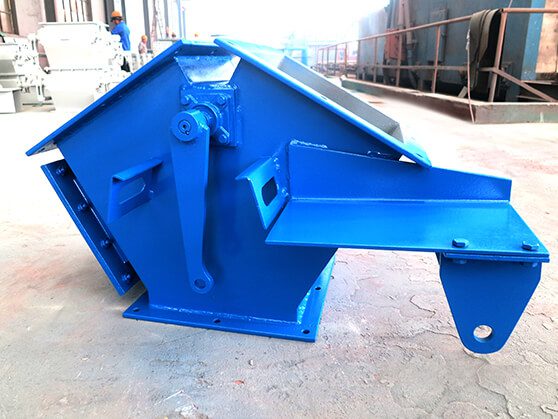In the intricate networks of pipes, conduits, and systems that transport liquids, gases, and even solids (like powders in pneumatic systems), control is paramount. Among the most versatile tools for achieving this control is the humble yet powerful three-way diverter valve. This unsung hero acts as a sophisticated traffic director for flowing media, enabling critical functions like flow diversion, system isolation, and process optimization across countless industries. Let’s delve into the mechanics, applications, types, selection, and advantages of this essential flow control component.
Understanding the Core Function: Divert, Not Mix
The defining characteristic of a three-way diverter valve is captured in its name: it has three ports. The key functional principle is diversion, not blending. Its primary job is to direct an incoming flow stream from one common inlet port towards one of two possible outlet ports – not to mix streams from two inlets into one outlet.
The Ports Explained:
- Common Port (Inlet Typically): This is where the media enters the valve. In diverting mode, it’s almost always the source.
- Port A (Outlet 1): One possible exit path for the flow.
- Port B (Outlet 2): The alternative exit path for the flow.
The Crucial Distinction: Diverter vs. Mixer
- Diverter Valve (3-Way/2-Position): One input, flow directed to Output A OR Output B. Mixing is not the intention or standard function.
- Mixing Valve (3-Way/2-Position): Two inputs (e.g., hot and cold), flow combined into One output. Blending is the goal.
(Note: Some specific 3-way valve designs can be configured as either diverters or mixers depending on how ports are plumbed, but they operate based on distinct principles)
How It Works: The Internal Dance
The magic happens inside the valve body via a movable component manipulated by an actuator. Here’s how flow direction is controlled:
- Position 1: Flow to Port A
- The actuator positions the internal mechanism (ball, plug, disc) to create an open passage between the Common Port and Port A.
- Simultaneously, the passage to Port B is blocked.
- Result: 100% flow goes to A, zero flow to B.
- Position 2: Flow to Port B
- The actuator moves the internal mechanism to create an open passage between the Common Port and Port B.
- The passage to Port A is now blocked.
- Result: 100% flow goes to B, zero flow to A.
- “Off” or Transitional State:
- Some valves (especially those without a specific shutoff function) might have a mid-position briefly during actuation where both ports are closed, isolating the system downstream temporarily. This isn’t a standard operating position for diversion, but it can occur during switching.
Internal Mechanism Types (Determining Construction & Suitability)
The heart of the diverter valve is its mechanism. Common types include:
- Ball Valves:
- Mechanism: A spherical ball with a precisely machined L-shaped or T-shaped bore.
- Diverting Action: The ball rotates 90 degrees. The “L” port connects Common to either A or B. The “T” port design (less common in pure diverters) can offer more flow paths but isn’t typically used for pure diversion.
- Pros: Excellent shutoff, low torque operation, full port options (minimal flow restriction), versatile materials.
- Cons: Cavitation/slurries can erode seats/balls.
- Plug Valves:
- Mechanism: A tapered or cylindrical plug with one or more machined ports, rotated within a matching body cavity.
- Diverting Action: Rotation aligns the plug’s bore to connect Common to either A or B.
- Pros: Tight shutoff, good for slurries and viscous fluids where solids might hang up in a ball valve.
- Cons: Higher operating torque than ball valves, potential for galling on metal plugs, less common now than ball valves for general diversion.
- Butterfly Valves:
- Mechanism: A disc mounted on a rotating shaft within the pipe bore.
- Diverting Action: Special triple-offset or high-performance butterfly designs can be adapted for diversion. The disc rotates almost perpendicular to the flow stream.
- Pros: Compact, lighter weight, lower cost for large sizes.
- Cons: Less positive shutoff than ball/plug (can weep), higher pressure drop, challenging for precise 2-position diversion without complex linkages; more common for on/off or modulation than pure diversion.
- Piston Valves:
- Mechanism: A cylindrical piston slides linearly within a bore, exposing ports.
- Diverting Action: Linear movement opens Common to A while closing B, or vice-versa.
- Pros: Robust, good for high pressure/high temperature, minimal internal cavities.
- Cons: Longer stroke, larger actuator often needed, less common than rotary valves.
Actuation: Putting the Valve to Work
The diverter valve needs force to move its internal mechanism. Actuation methods vary widely:
- Manual: Levers or handwheels. Simple, low-cost, used where automation isn’t needed (e.g., manual equipment setup).
- Pneumatic: Air pressure acting on a diaphragm or piston. Fast response, reliable, explosion-proof options available. Industry standard for automation.
- Hydraulic: Oil pressure for very high force requirements.
- Electric/Solenoid: Electric motor (for rotary valves) or solenoid (for linear/toggle action). Good for remote control, integrating with PLCs/SCsDA. Solenoids are fast but lower force; motors provide high torque but slower.
- Electro-Pneumatic: Combines electronic control signal with pneumatic power. Highly flexible and powerful.
Where are Three-Way Diverter Valves Used? (Applications Galore)
Their ability to reliably switch flow paths makes them indispensable in numerous sectors:
- HVAC & Building Services:
- Diverting chilled water flow for dehumidification reheat coils.
- Switching boiler flow between primary heating loops (e.g., radiators vs. underfloor).
- Diverting hydronic heating/cooling flow to bypass a zone or coil during setback or failure.
- Switching condenser water flow paths for tower bypass or maintenance.
- Industrial Process Control:
- Diverting product flow between different processing lines (e.g., filling machines, reactors).
- Switching filter inlet/outlet for filter maintenance without stopping the main process.
- Diverting samples to analytical instruments.
- Directing CIP (Clean-In-Place) chemicals to different circuits.
- Selecting coolant paths on machine tools.
- Diverting pneumatic conveying lines for bulk solids.
- Water & Wastewater Treatment:
- Diverting flow between settling tanks or filter beds.
- Switching backwash flows.
- Directing treated water to different storage tanks.
- Sampling streams.
- Manufacturing & Automation:
- Controlling coolant flow on CNC machines.
- Directing lubricant flow.
- Switching air supply circuits on assembly lines.
- Diverting packaged goods on conveyor systems (via air jets).
- Chemical & Pharmaceutical:
- Diverting batches between reaction vessels.
- Switching between purification stages.
- Highly specialized valves for sterile diversion, often meeting strict hygienic standards (e.g., ASME BPE, 3A).
- Food & Beverage:
- Diverting product flow between fillers, pasteurizers, or packaging lines.
- Directing CIP/SIP fluids.
- Valves made from approved materials (316SS, EPDM, PTFE) with hygienic finishes (Ra < 0.8µm).
Selecting the Right Three-Way Diverter Valve: Key Considerations
Choosing the optimal valve involves balancing multiple factors:
- Media: What is flowing? (Water, steam, oil, corrosive chemical, slurry, gas, abrasive powder?) Determines material compatibility (body, trim, seals). E.g., 316SS for corrosives, Hastelloy for extreme conditions, special seals for organics.
- Temperature & Pressure: Max/Min operating temperature and pressure? Dictates material strength, seal selection (EPDM, Viton, PTFE?), and pressure rating (Class 150, 300, etc.).
- Flow Rate & Velocity: Required CV value or pipe size? Impacts port size (full port preferred for minimal pressure drop/slurries, reduced port okay for lower flows). High velocity can cause erosion/cavitation.
- Function & Position: Strictly diverting between two outlets? Is a tight shutoff in both positions critical? (Ball/Plug valves excel here). Is a transitional “dead leg” acceptable?
- Actuation: Manual, pneumatic, electric? Required speed of operation? Control signal availability (on/off air or electric, 4-20mA for proportional?) Consider fail-safe requirements (what position should it go to on loss of power/air?).
- End Connections: Flanged (ANSI, DIN, JIS?), Threaded (NPT, BSP?), Tri-clamp (Sanitary), Welded?
- Industry Standards & Certifications: NSF/ANSI 61 (potable water), ASME BPE (BioPharma), 3A (Dairy), PED (Pressure Equipment Directive), ATEX/IECEx (Hazardous Areas).
- Body Style: Straight pattern (“L” flow), Angle pattern (“Y” flow).
Advantages: Why Choose a Diverter Valve?
- Flow Direction Control: Core purpose – precise, reliable switching.
- System Isolation: Effectively isolates one outlet while flow continues to the other.
- Reduced Piping Complexity: Often simpler than using multiple 2-way valves to achieve the same function.
- Reduced Dead Legs: Compared to some multi-valve setups, well-designed diverters minimize stagnant zones.
- Process Efficiency: Enables automated switching, optimized routing, bypass functions.
- Maintenance Flexibility: Allows isolation of components without shutting down the entire system.

Potential Limitations & Troubleshooting
- Cost: Typically more expensive than a single 2-way valve (though less complex than multiple 2-way setups).
- Pressure Drop: Always introduces some resistance; valve selection (full port vs. reduced) is key.
- Leakage: All valves leak minimally; internal leakage across seats or stem leakage can occur and worsen with wear. Tight shutoff designs minimize this.
- Cavitation/Slurry Wear: Can damage internals, especially seats/seals, in susceptible applications. Material/design selection is critical.
- Actuator Failure: Loss of power/air can cause unintended flow paths if fail-safe isn’t configured correctly.
- Clogging: Slurries or viscous media can clog small internal passages or mechanisms. Plug valves or full-port ball valves are often preferred.
The Future: Smarter Diversion
Trends include increased integration with Industrial IoT (IIoT), using sensors to monitor valve position, cycle counts, temperature, and even acoustics to predict maintenance needs. Proportional diverting valves, capable of gradual flow splitting (not just 100/0%), are finding niche applications demanding finer control beyond simple on/off switching.
Conclusion
The three-way diverter valve is a fundamental building block of efficient and controlled fluid systems. Its simple concept – directing flow down one path or another – underpins countless critical operations from keeping buildings comfortable to manufacturing life-saving pharmaceuticals. Understanding its function, types, selection criteria, and applications empowers engineers, technicians, and system designers to leverage its capabilities effectively. By choosing the right valve – correctly sized, suitably constructed, and appropriately actuated – for the specific job, facilities gain reliable performance, process flexibility, and enhanced operational control for years to come. This unsung flow director truly deserves recognition for its role in the smooth operation of our engineered world.

